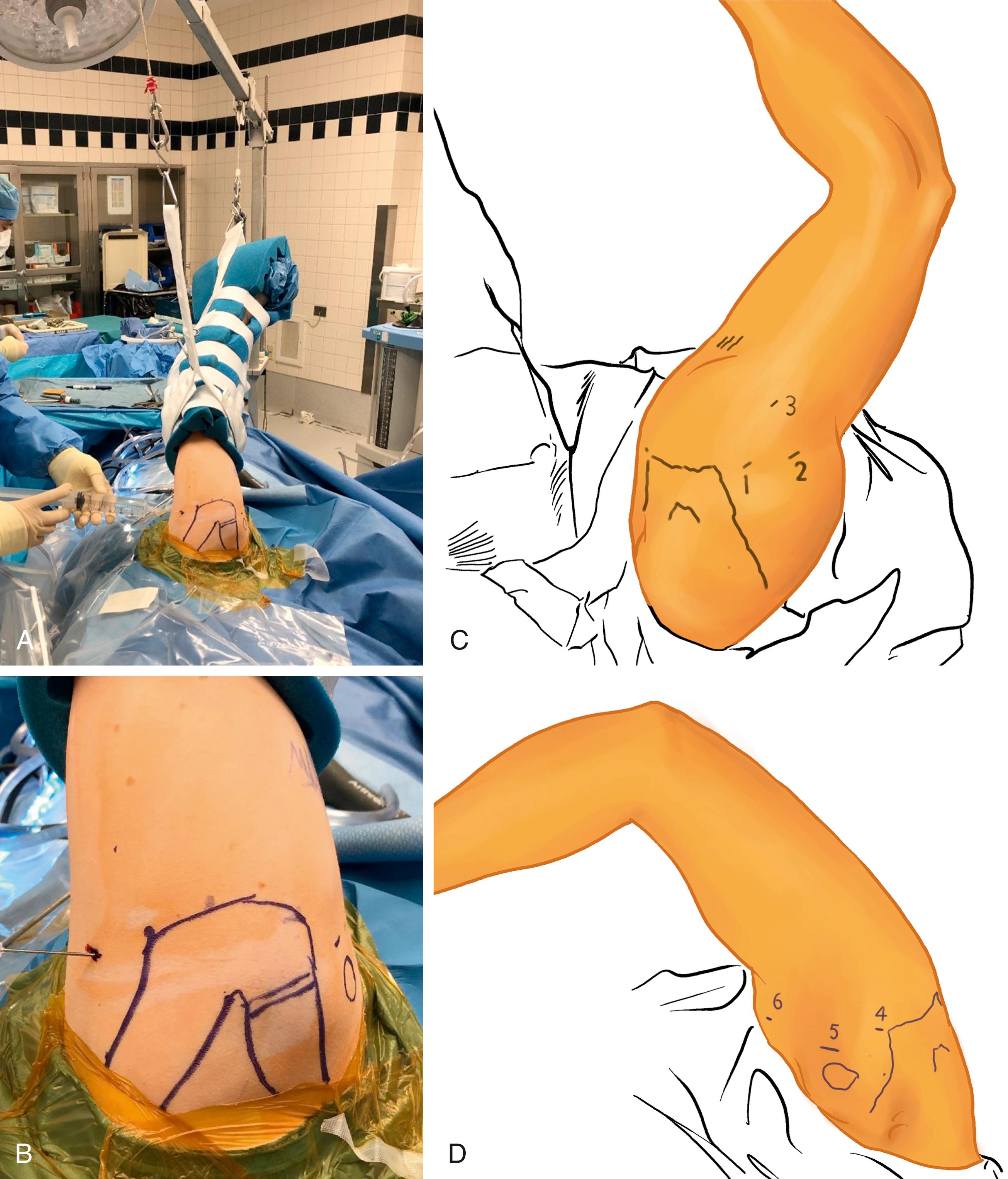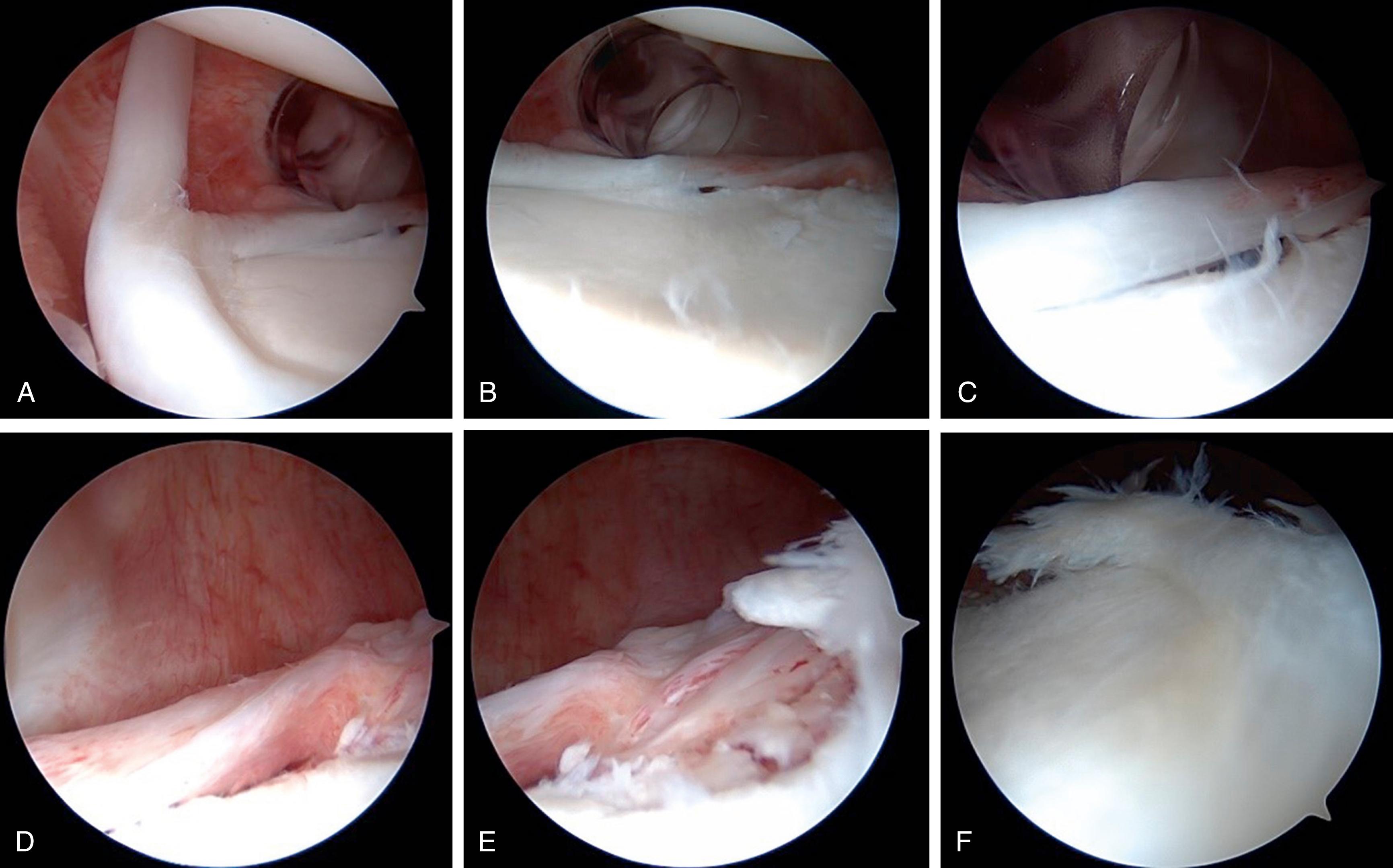Physical Address
304 North Cardinal St.
Dorchester Center, MA 02124
Owing to the unique anatomy and range-of-motion (ROM) demands of the shoulder, coordination of several static and dynamic stabilizers is necessary to maintain shoulder stability. This coordination can be disrupted, most commonly secondary to acute traumatic dislocation or atraumatic laxity of the shoulder. As a result, glenohumeral instability of the shoulder is a commonly treated condition in orthopedic clinics, with reported incidence rates in the general public of 0.08 per 1000 person-years and much higher rates in military and contact athlete populations. Single or recurrent dislocation events often result in tears of the capsulolabral soft tissue stabilizers around the glenoid, which, depending on location and severity, can result in posterior, multidirectional, and most commonly, anterior instability of the shoulder.
In patients with recurrent instability or, increasingly, first-time dislocators at high risk of redislocation, surgical stabilization is often indicated to minimize pain, improve shoulder function, and prevent subsequent dislocation events. Depending on the location and extent of the anterior or posterior capsulolabral tear (commonly referred to as Bankart or Kim lesions, respectively) as well as the presence of concomitant pathology, including glenohumeral bony defects, a number of different surgical approaches have been described to restore stability.
Labral tears have traditionally been repaired to the glenoid rim using open techniques, but in recent decades the use of arthroscopic repair techniques has increased significantly. With the improvement in arthroscopic instrumentation, anchors, and techniques, outcomes of arthroscopic stabilization are comparable to those of open stabilization. The purpose of this manuscript is to describe in detail a surgical technique for arthroscopic anterior and posterior labral repair using modern knotless implants. Surgical indications, preoperative planning, operative details, technical considerations, and high-yield pearls and pitfalls are highlighted to provide a practical guide to modern arthroscopic labral repair.
A thorough history and physical examination must precede and guide the treatment plan. History should be focused on the mechanism of injury, direction of instability, chronicity, degree of instability (subluxation vs. dislocation), number and frequency of instability events, risk factors for recurrence (e.g., age), presence of hyperlaxity, and athletic participation. A thorough standard physical examination should follow, with inspection, palpation, ROM, strength, provocative tests for instability, and a peripheral neurovascular exam.
Routine radiographs include the true anteroposterior, scapular, and axillary lateral view. Stryker-notch and West Point views are recommended for the evaluation of Hill-Sachs lesions and glenoid bone loss, respectively, and should be considered for screening. Magnetic resonance imaging (MRI) is critical for surgical planning to assess for the location and extent of labral pathology and rule out concomitant lesions, including humeral avulsion of the glenohumeral ligament (HAGL), anterior labral periosteal sleeve avulsion (ALPSA), and rotator cuff lesions. Computed tomography (CT) is not used routinely but should be considered if bone loss is suspected. Three-dimensional (3D) volume-rendering reconstructions with humeral subtraction are particularly valuable to quantify the glenoid bone loss. ,
Indications for isolated arthroscopic labral repair is a subject of controversy (see Chapter 19 ). However, in our hands, we consider arthroscopic labral repair in young active patients with recurrent instability, a confirmed labral tear on MRI, and symptomatic glenohumeral instability in the absence of critical glenoid bone loss (<15%–25%). Relative contraindications to isolated arthroscopic labral repair include patients with instability that is more appropriately treated with a different operation: critical glenoid bone loss (>15%–25%), concomitant pathology including a large engaging Hill-Sachs, or the presence of a HAGL. Another, even more common relative contraindication is a labral tear in the setting of degenerative shoulder: early glenohumeral osteoarthritis without instability. These tears commonly comprise poor quality tissue, torn in an atypical and intrasubstance pattern, and are made worse with repair as this procedure can hasten the progression of stiffness and arthritis associated with their degenerative changes.
We advise eligible patients to undergo interscalene block in the preoperative holding area, followed by endotracheal intubation or a laryngeal mask (LMA) in the operating room. In a patient with a suspected tear of the anterior, posterior, and/or inferior labrum, we prefer the lateral decubitus position with balanced traction. This is especially true when the pathology is suspected to be located at the more inferior section of the labrum. However, this procedure can also be performed in the beach chair position, depending on the surgeon’s preference and experience.
Once the patient is anesthetized, an examination under anesthesia (EUA) should be performed to assess for ROM and stability. EUA should be performed prior to positioning in the lateral decubitus position to allow comparison to the contralateral side and then repeated in the lateral decubitus position to gauge the amount of stabilization required. The load and shift maneuver can be used to assess anterior and posterior translations. While performing the load and shift maneuver in a patient with a labral tear, an audible click may be heard, particularly in cases of posterior instability with labral tear. The Sulcus sign is less appreciated in the lateral position but may be accentuated in patients with multidirectional instability (MDI). The EUA is critical to quantifying the true magnitude of instability and is used to gauge the degree of stabilization to be performed.
When positioning in the lateral decubitus position, all bony prominences should be padded, an axillary roll should be placed, and a bean-bag positioning device is typically used. Once the patient is secured in the lateral decubitus position, the shoulder is then prepped and draped in a standard sterile fashion and positioned in the lateral distraction device (Lateral Decubitus Shoulder Traction Tower; Arthrex, Naples, FL). The arm is secured in the distraction device at 50 degrees shoulder abduction and 15 degrees forward flexion with 10–12 lb of in-line traction and a similar weight for lateral distraction. Balanced traction provides symmetric distraction to optimize visualization of the entire glenohumeral articulation, including the inferior aspect. Once the positioning is complete, standard landmarks are identified. A spinal needle is used to insufflate the glenohumeral joint with saline ( Fig. 20.1A–B ).

Posterior portals include the standard posterior viewing portal, posterior working portal, and the 7-o’clock portal. Anterior portals include the anterosuperior viewing portal, anterior working portal, and the 5-o’clock portal ( Fig. 20.1C–D ). The location of the labral tear and the surgeon’s preference will dictate which portals will allow the optimal view and access for repair.
Arthroscopy of the glenohumeral joint is typically initiated using a posterior viewing portal, which is made nearly in-line with the lateral edge of the acromion, and 1 cm inferior to the acromion (slightly lateral and superior to the standard posterior portal in beach chair position). This allows for the posterior portal to be angled slightly inferiorly (∼15 to 20 degrees) relative to the glenoid rim, which is particularly helpful when a posterior stabilization is required, allowing improved view of the glenoid surface, avoiding portal crowding with accessory posterior portals, and can be used for posterior anchor placement. The anterosuperior viewing portal is made under direct visualization in the superior aspect of the rotator interval with the guidance of a spinal needle. A clear 5-mm cannula is inserted into the anterosuperior portal followed by a probe. In cases where the anterosuperior portal is not needed, an anterior working portal can be established instead. Once posterior and anterior portals are established, a systematic diagnostic survey of the glenohumeral joint is performed using the Southern California Orthopedic Institute (SCOI) 15-point evaluation system. , Encountered pathologies of the labrum, glenoid, humeral head, biceps tendon, and rotator cuff are comprehensively evaluated. Labral tears are typically easily detected, but some fissures (Kim lesions) resulting from repetitive microtrauma may be more subtle. Once diagnosed, the labral tear should be probed to evaluate the depth of the tear and to interrogate the chondrolabral junction. The location and extent of the tear should be documented, and a repair plan verbalized to the operating team.
An anterior (mid-glenoid) working portal is made low in the rotator cuff interval, just superior to the subscapularis tendon and lateral to the tip of the coracoid process. An 8.25-mm cannula is secured to ensure the posterior labrum can be accessed. The anterior portal will be used for anterior anchor placement, suture passage, and preparation of the posterior glenoid labrum as needed. The arthroscope is left in the posterior viewing portal for the preparation of the anterior glenoid and can then be switched to the anterosuperior portal for the preparation of the posterior glenoid as needed ( Fig. 20.2A–F ).

Become a Clinical Tree membership for Full access and enjoy Unlimited articles
If you are a member. Log in here